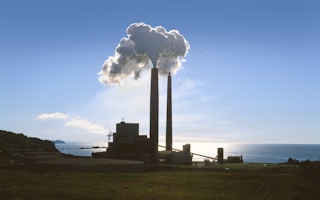Post 2020 carbon markets are a very exciting space with much to contribute to achieving our global emission reduction targets. These are likely to undergo significant structural changes by the conclusion of the Paris climate summit in December 2015.
To continue reading, subscribe to Eco‑Business.
There's something for everyone. We offer a range of subscription plans.
- Access our stories and receive our Insights Weekly newsletter with the free EB Member plan.
- Unlock unlimited access to our content and archive with EB Circle.
- Publish your content with EB Premium.
Some of these structural changes are beginning to emerge during the ongoing climate talks in Lima, Peru. Countries already know that first, under the U.N. Framework Convention on Climate Change (UNFCCC), governments worldwide committed to sign a new international climate agreement by the end of next year’s climate talks in Paris.
Countries also know that second, key governments worldwide committed to publicly outline what actions they intend to take under a global agreement by March 2015. These forthcoming country commitments are now known as Intended Nationally Determined Contributions (INDCs) and their strength and shape will determine whether the Lima and Paris talks have been successful.
INDCs will introduce the first big changes to the structure of carbon markets.
A formally submitted INDC will define a country’s stated share of the global atmospheric space. Whilst there is no agreement on a review process, these bottom up submissions will be added up, formally or informally, and compared against what we need to do to reach the 2⁰C target. The INDC converts the right to pollute the global atmosphere with a tonne of CO2 into a sovereign asset. As a result, governments will likely start properly valuing emission rights and stop giving them away for free, because voters will ensure that Governments won’t sell their sovereign assets cheaply.
In addition, emission trading schemes with auctioning will effectively become emission pricing schemes; participation in emissions trading will be driven by hedging activities and speculators and not by companies selling windfall surplus allocations (there aren’t any windfall surplus allocations under an auction process, which will save us shifting billions to polluters for no good reason).
Finally, domestic carbon markets are spreading and linking up around the world, and are likely by 2015 to cover some 4 billion people – but how countries design domestic schemes is up to them. However, as soon as any kind of carbon asset becomes transferable out of a country, it will need to be accounted for as an emission in the national inventory and will count against the INDCs (i.e. increase the economy’s emissions).
These structural changes in the carbon markets will come on the back of a 2015 UN climate agreement which is likely to give countries much greater flexibility in how they comply with their INDC.
“
Post 2020 carbon markets are a very exciting space with much to contribute to achieving our global emission reduction targets. These are likely to undergo significant structural changes by the conclusion of the Paris climate summit in December 2015.
There will also be a lot of flexibility in the 2015 text around how and what markets are. They won’t look anything like the markets we see today under the Kyoto Protocol or the EU ETS for example, and we need to be prepared to come up with some new approaches to markets and the way we use them to promote economically efficient distribution and consumption of our remaining atmospheric space.
Furthermore, the 2015 agreement won’t contain any top down targets. Under Kyoto, top down targets were agreed for OECD countries and Economies in Transition and enacted through the distribution of Assigned Amount Units (AAU).
In the 2015 agreement we expect countries to declare their own INDCs and then implement policies and measures and help one-another to meet them. They can define their own units and transfer them between each other but, instead of transferring an AAU, the exporting country will show an extra emission in their inventory and the importing country a deduction of one emission. This will ensure the zero sum nature of the transaction but constitutes a significant departure from the existing structure of the Clean Development Mechanism.
If the project activity is 100 per cent additional and would not have occurred without the creation of the carbon market, then all is good. But if, for example a recent domestic policy would have caused the intervention, then the host country is at risk of giving away a sovereign asset – that’s OK if that’s what the government wants to do because the investment could bring other (sustainable development) benefits, but they shouldn’t give it away unknowingly or too cheaply.
The consequences of the 2015 agreement for carbon markets are likely to be far reaching. Anyone, be it government or an entity, that has excess units to sell should be prepared to explain how they got these allowances and buyers should beware of units which originate from free or over-generous allocations, or under-bid auctions. Yes, it’s a market but these are sovereign assets. Buyers should be sure that units which they purchase contribute to sustainable development and have taken full account of the social, environmental and economic costs of the units.
What about existing CDM projects? Governments need to be aware that investors probably think that existing documentation confers the right to transfer units out of the country post 2020. My guess it that post-2020, host countries will seek to extract a (much higher) price from projects before they allow the export of emission rights.
Gareth Brydon Phillips is a consultant for Sindicatum. This post originally appeared on the Sindicatum blog here.











